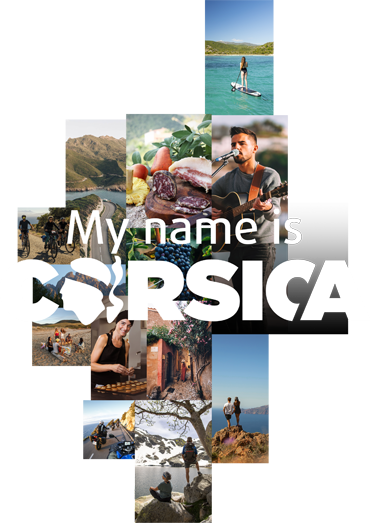
Rechercher...
Explore Corsica

By Sylvain the 16/03/2023
‘U Catenacciu’: the rise of Christ at Calvary
Without doubt the most spectacular procession in Corsica, to be experienced at least once
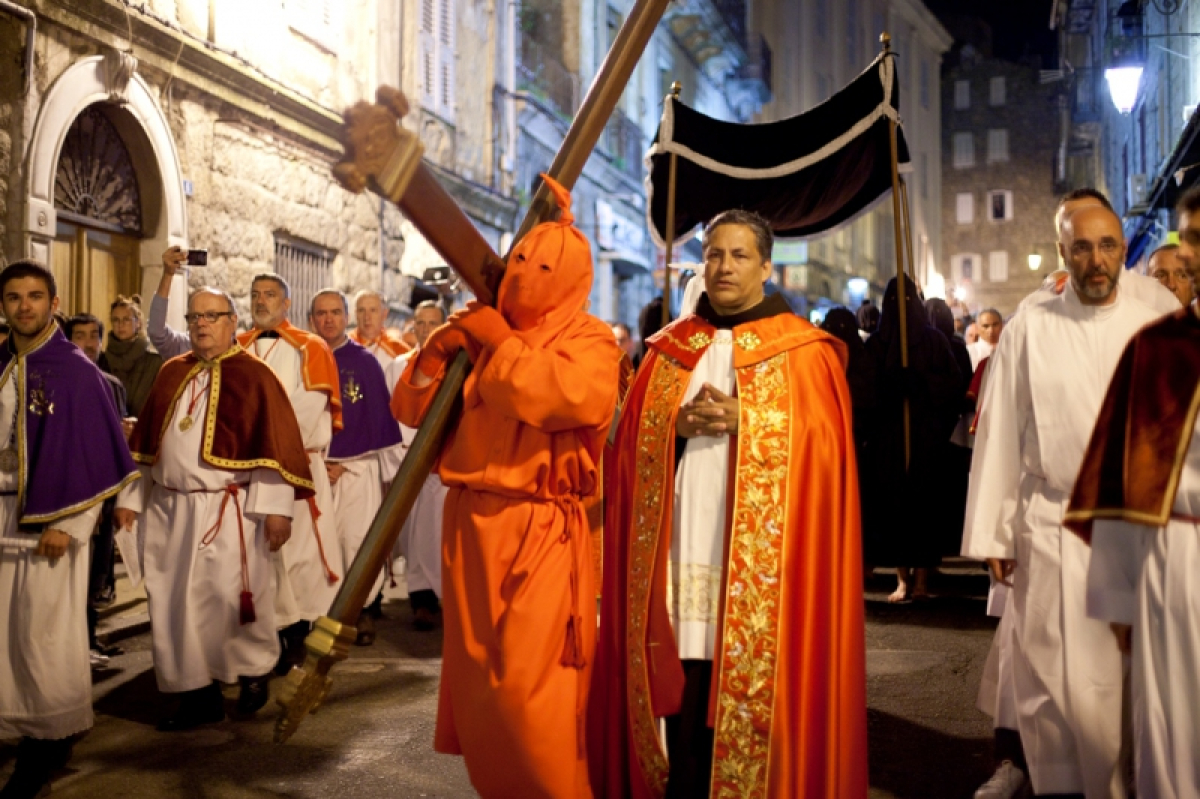 U Catenacciu ©ATC
U Catenacciu ©ATC
I’d dreamt of seeing this procession for a long time and, on the recommendation of my friend Christophe Mondoloni, I decided to ascend to Sartène the Thursday preceding the catenacciu.
I was advised to watch the procession of Holy Thursday, which according to Christophe is ‘more intimate’. This was also an opportunity for me to ‘identify’ the penitents’ route by following the ‘nails’ that mark it, to immerse myself in the atmosphere that reigns in the village, to follow the preparations, and to hear some anecdotes – such as the fact that three days beforehand, “the penitent had been locked up in a monastic cell at the San Damianu convent, where he meditated, read the Bible and prayed”.
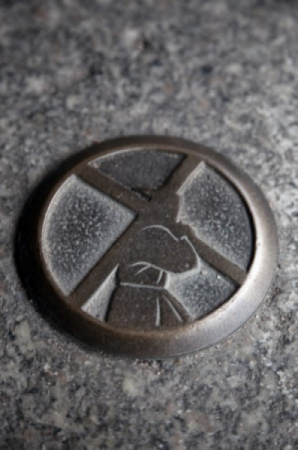
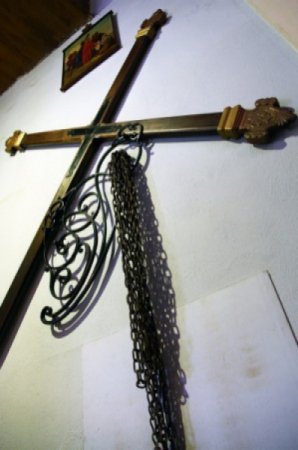
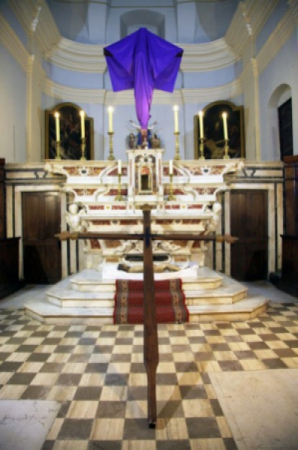
The appointment is taken at 6 p.m. to follow the mass at the church of Santa Maria and at 9 p.m., to follow the "Procession des Sartenais".

It is certainly an intimate affair, giving a real impression of meditation, with less crowds – almost ‘the calm before the storm of tomorrow’, despite the very long, hard coastal climb that leads to prayer in San Damianu church.
On Good Friday at 9pm, I had the honour of attending the arrival and the preparations of the penitent at Santa Maria church. The words of Antoine Ciosi’s song ‘The Door Cross’ immediately came to mind... “feet red with blood, he moves slowly, the door cross .... Let the penitent and his peaches pass…”.
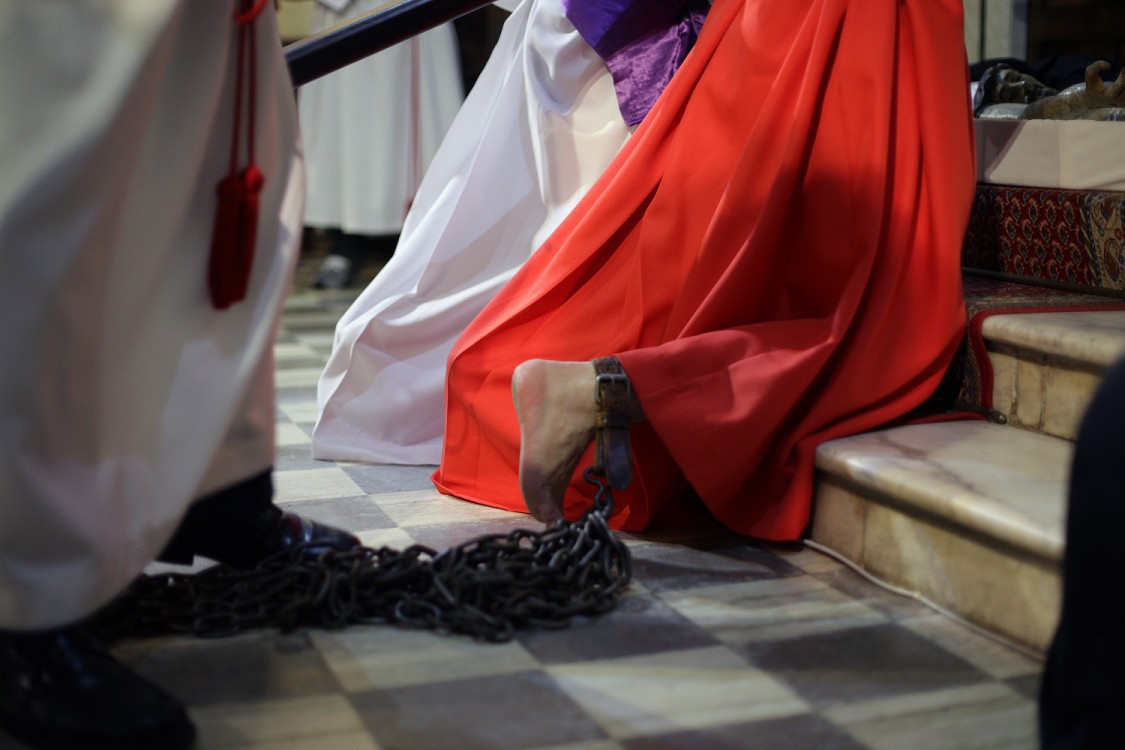
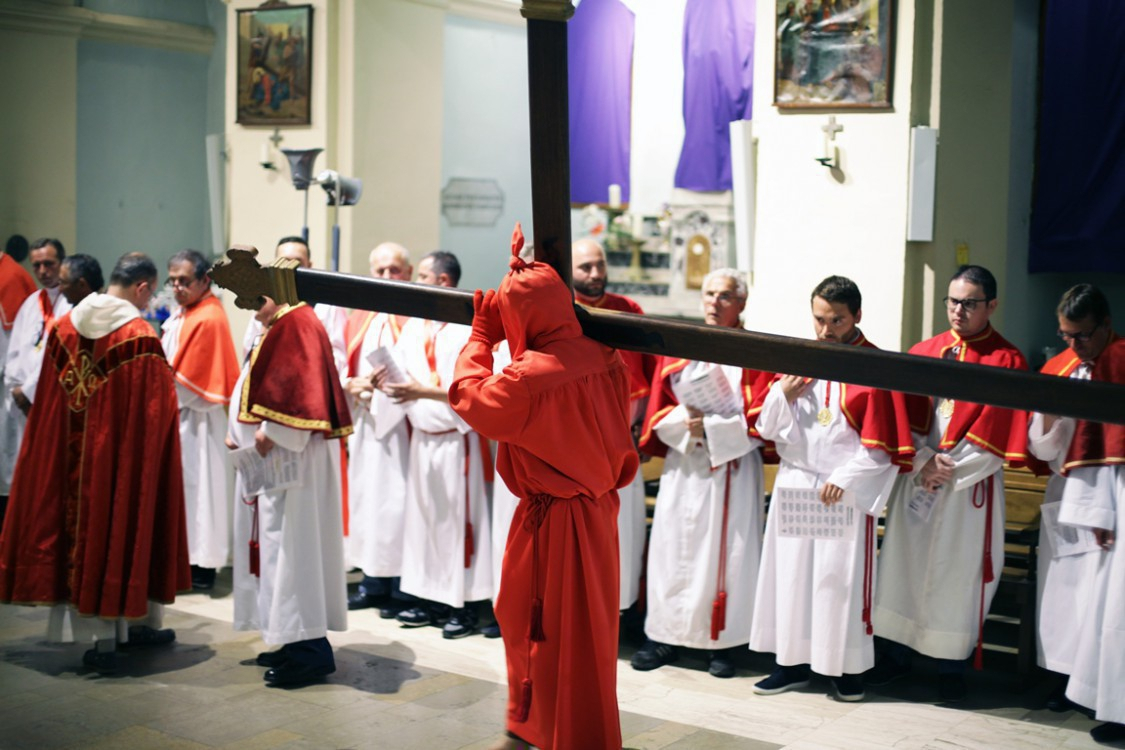
Then followed the Miserere and Perdono mio dio, and the sounds of the chains dragging on Sartène’s pavements. They stayed with me days afterwards. Secretly, we always ask ourselves the same questions: “who is Catenacciu?” and “what serious sins did he commit?”. These questions remain unanswered – only the priest of Sartène knows the penitent, protected by the secret of San Damianu.
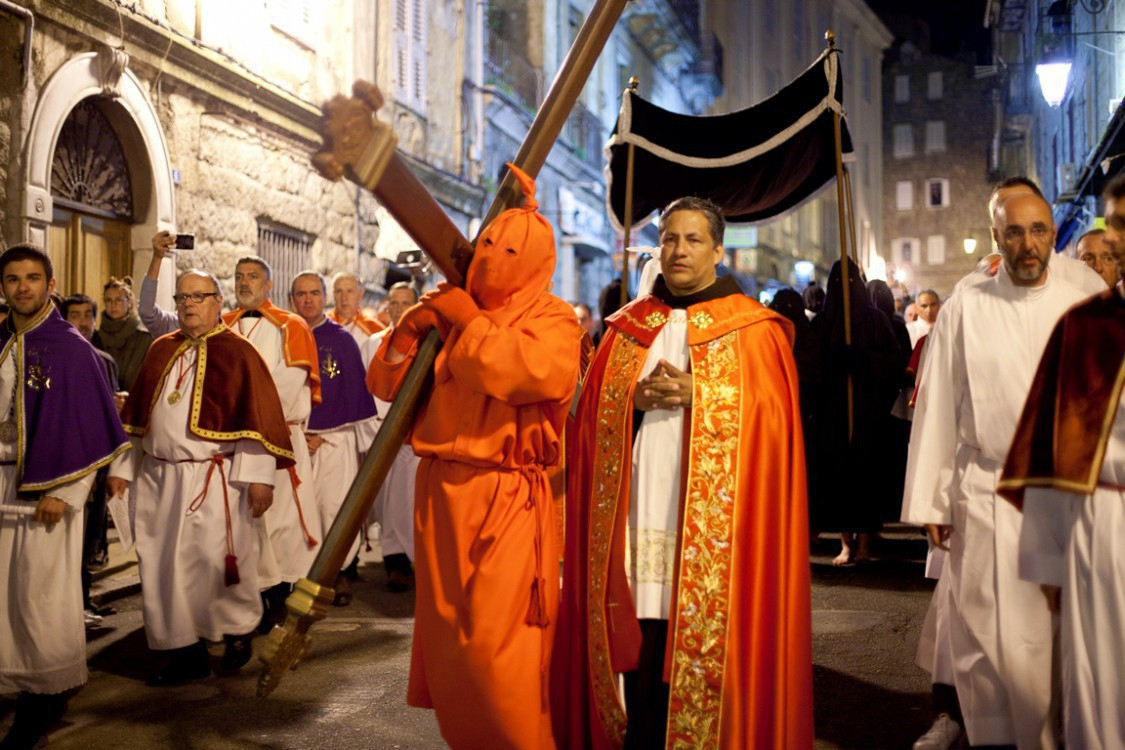
The most impressive moment was the entry ‘on stage’ of the “catenacciu”, partly due to the accompanying silence, but partly for the ritual beside the altar. The members of the brotherhood formed a hedge of honour around the penitents, doors open. Around a thousand people were gathered there, waiting “to see” – there was an extraordinary atmosphere of passion at that moment.
The first fall took place in front of the Sainte-Anne oratory, which was Sartène’s parish church in the 18th century.
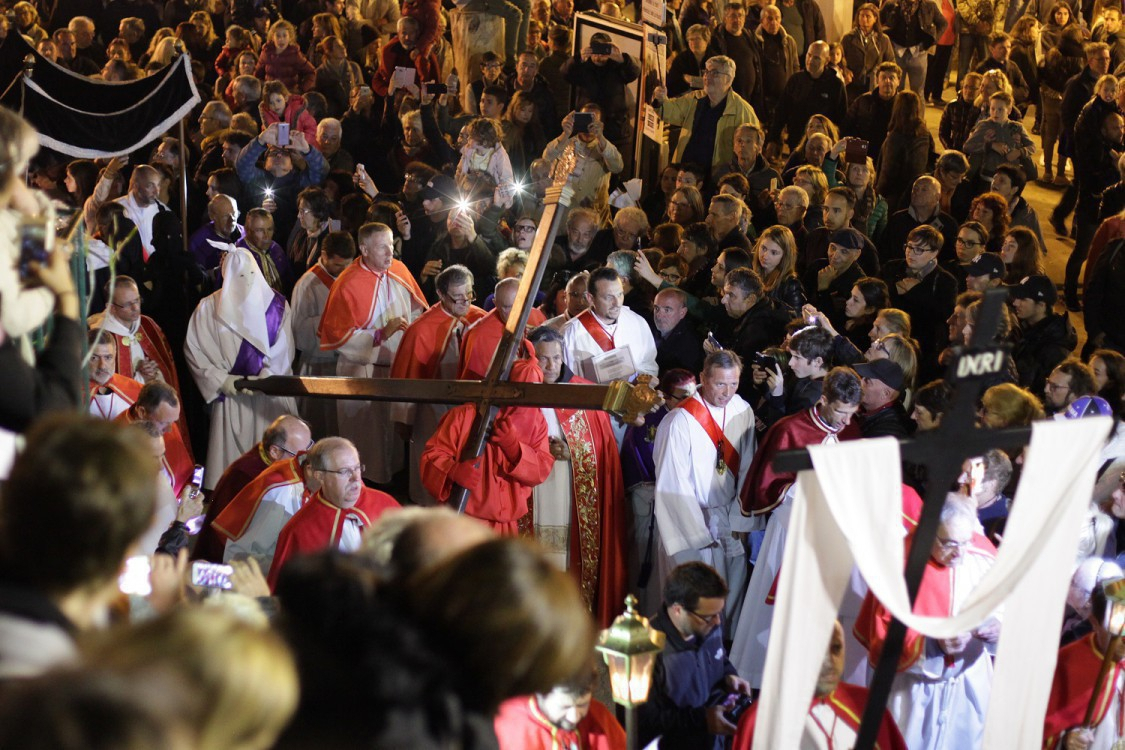
The whole city recited the ‘Our Father’ and ‘Hail Mary’ while the penitent remained lying on the ground. The second fall took place on Porta Square, at the foot of Saint Mary’s church. Midway through, the “catenacciu” was relieved of its burden by the white penitent. Before the third fall, the whole procession paused at the San Sebastián church.
The “catenacciu” knelt before the altar, at the foot of which were a lying Christ and a Virgin draped in black. After the third and final fall, the penitent joins the forecourt of the parish church. I managed to access the terrace of a nearby house, getting up high, from where I could see the catenacciu pass and watch the crowd listen religiously to the words of the priest.
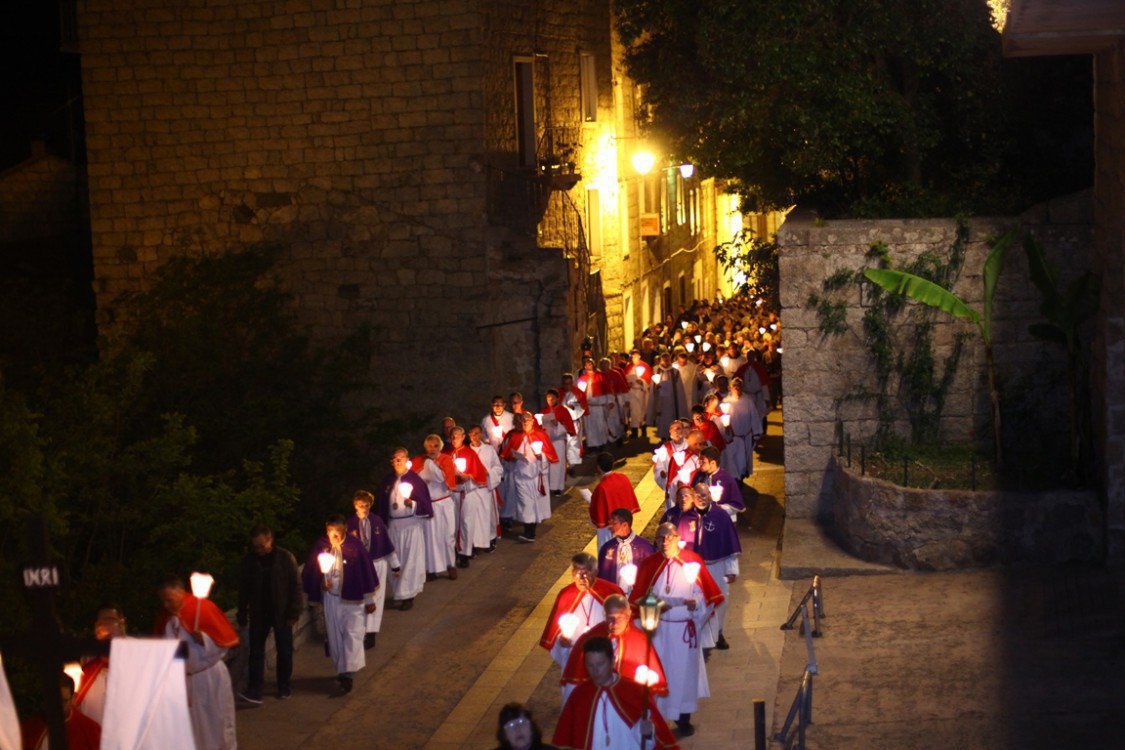
All participants then returned to the Sainte-Marie church to gather. Kneeling or lying at the altar, the penitent waited for all the pilgrims to kiss the lying Christ one by one.
You can watch the emotional scenes on our YouTube channel.
Further information
FIND OUT MORE
To learn more, read the work of Christophe Mondoloni, "U catenacciu di Sartè", "the enchained Sartène" published by Colonna editions
Locate
On the same subject
CULTURE ET DÉCOUVERTES
Unmissable offers
CULTURE ET DÉCOUVERTES
powered by cd-media.fr



